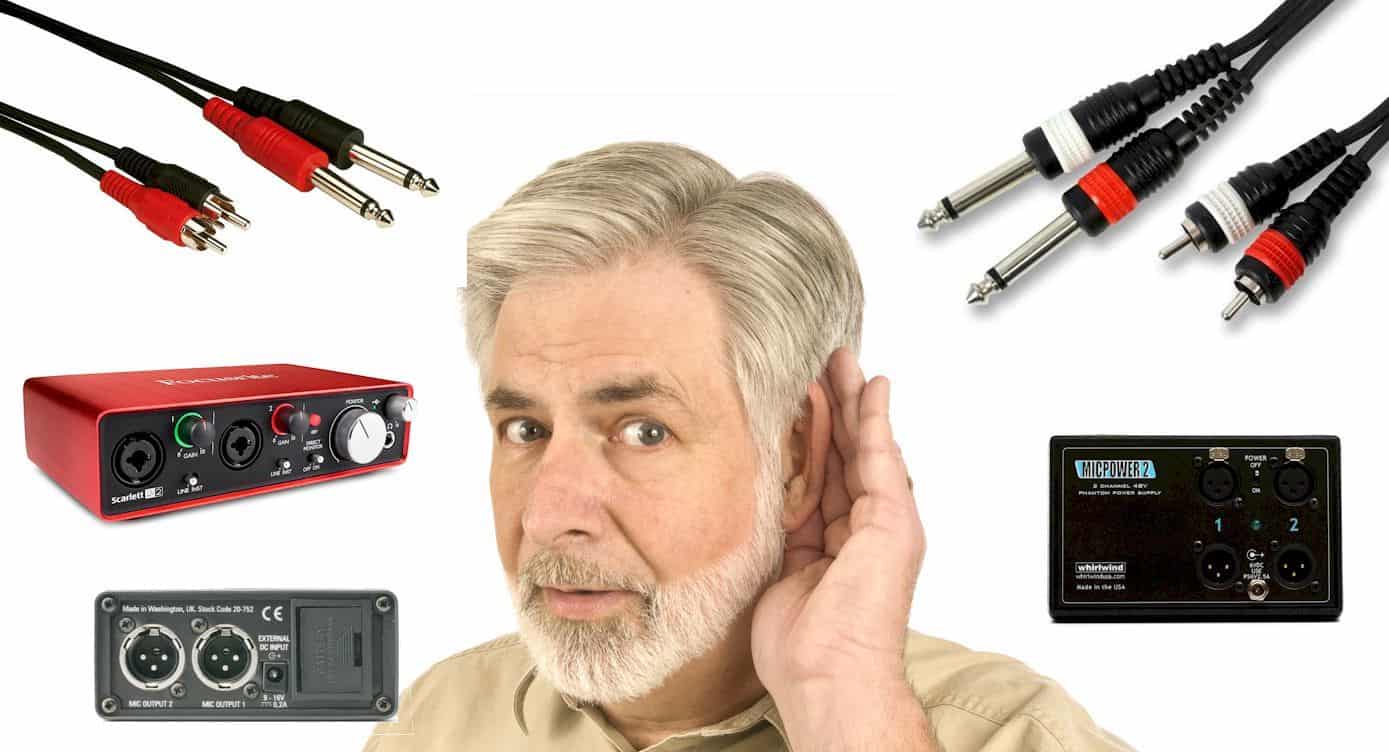Should you use a line in or a mic in to plug your audio device into a receiver? How do you know if you're to use a line in vs mic in? You may have never thought of this before, but there is a huge difference between line-level input and a mic level input. Both are used to refer to signal voltage levels, but the voltage for each kind of signal differs.
Contents
What is a mic in and line in? Can you use MIC in as a line-in?
A mic in is a type of input that is used to connect wired and wireless microphones. A mic level signal is a type of signal that is created by a mic. Meanwhile, a line in is an input that is used by more powerful devices, including musical instruments and audio equipment. Because of the huge difference, you cannot use a MIC in as a line in.
Related: how to split RCA for various amps
What is a line in used for? What is a line in a microphone?
A line in is used by more complex and updated instruments. A line in is a type of jack in computer system cards that lets users connect an external device such as a microphone, CD player, musical instrument, and CD player.
What is the difference between mic in and line in?
There are many differences between a mic in and a line in.
The Differences in voltage
Mic level signals are created by a mic as it collects sound which is about 1,000th of a volt. A line signal is 1,000 times stronger than a mic in. This is why you cannot use a mic in as line in.
The voltage may vary depending on the changes in the source’s signal and sound levels. There are four kinds of audio signals and the weakest of all is mic level. This is why microphones need a pre-amp to convert the signals to line level.
The Differences in input and connectivity
A mic and a line do not operate on the same input. Line signal moves from the pre-amp to the amp which works the speakers. Two standard line levels exist: one for MP3 devices, DVD players, and other consumer equipment and have -10 dBV and one for professional equipment like mixing desks and signal processing devices with +4 dBu.
But when you want to connect record players and turntables, it’s another thing. These retro devices have different frequencies that will suit their needs. Their inputs are somewhat similar to mics at 5 mv. Again, a mic will not work with this type of input. If you do plug one, you will hear a weird sound that will be completely mixed up.
The Differences in converting signals
There are many kinds of devices that help convert mic levels to line signals. One of the most common pieces of equipment is a mixer which can combine a variety of signals to create one output. There are also pre-amps, mic to line amplifiers that convert mic-to-line, and other multi-channel equipment.
Line inputs cannot be used in a mic input. The resulting sound, or if there is any sound at all, will be so soft you can barely hear it. Mic inputs require about -5 mv as CD and MP3 music players create a sound of 100+ mv. For these devices, the best input would be a line input.
Mic in is used for microphone inputs while most audio equipment like consumer equipment and professional musical instruments uses line-level signals. Now you're probably wondering what happens when you change the inputs? Will there be sound or will you damage your equipment?
When you connect a line-level input to the mic input, the sound produced will be very loud and distorted. This happens because line signals are stronger compared to what a mic input accepts. However, the input and output in other updated mixers are switchable from mic to line levels.
The Differences in connectors and accessories
Mic and line-level signals use different types of audio connectors. Mic level input requires a female XLR connector while a line-level input needs a ¼ -inch phone jack, RCA jack, or a 3.5mm phone jack. You can't go wrong with mic and line inputs as these are indicated in most audio equipment.
If you find only one mic input in a piece of equipment like a computer or digital audio recorder, a line-level converter or device should be used. This is connected to the mic input to reduce the voltage. You may also make use of a signal attenuator box. Always use the right cables for a safe signal. There are types of cables that come with built-in resistors that can help reduce line-level voltage.
As for wireless receivers, you might find different types of outputs. If you are unsure, always refer to the device’s instruction guide to look for the output signal levels. You will notice that mic level signals are different in a variety of receivers. The variance can be as high as 20 dB.
Should I use line in or mic in?
The answer depends on what device you’re using. If you use another device than a microphone and plug it into a mic-in, you will surely end up overloading the signal and create a distorted sound. Always check the device and the equipment you want to connect to. Never mix the two inputs. If this happens, you must know how to quickly and safely change input signals in the device.
To reduce the output, you may do two things: reduce the output of the device or include another signal path. The first one is easy and effective but will affect the signal to the noise ratio. In case this happens, you need to work on your second option to include another signal path by using special pads or audio devices.
Bottom Line
So remember, when you’re stuck as to line in vs mic in, the two differ in signal levels. The mic has the weakest signal voltage, but this varies according to the distance of the source of the sound. You can enhance the intensity by taking the mic to line signals. A mic signal that moves through the preamp or a mixer will create a line-level signal. Wireless receivers are different and thus, you must check the device or equipment’s instruction manual.

HI, John Andrew here. I’ve been an audiophile since I was a little kid. I’m an original member of myaudiolover . It emerged as a way for me to share my passion and knowledge for audio technology. If you’re looking for tips, techniques, and insights about audio-tech, that can enable your productions that professional edge, then MyAudioLover is the place for you!


“A line in is a type of jack in computer system cards that lets users connect an external device such as a microphone…”
“…Again, a mic will not work with this type of input.”
Great clarity, John.